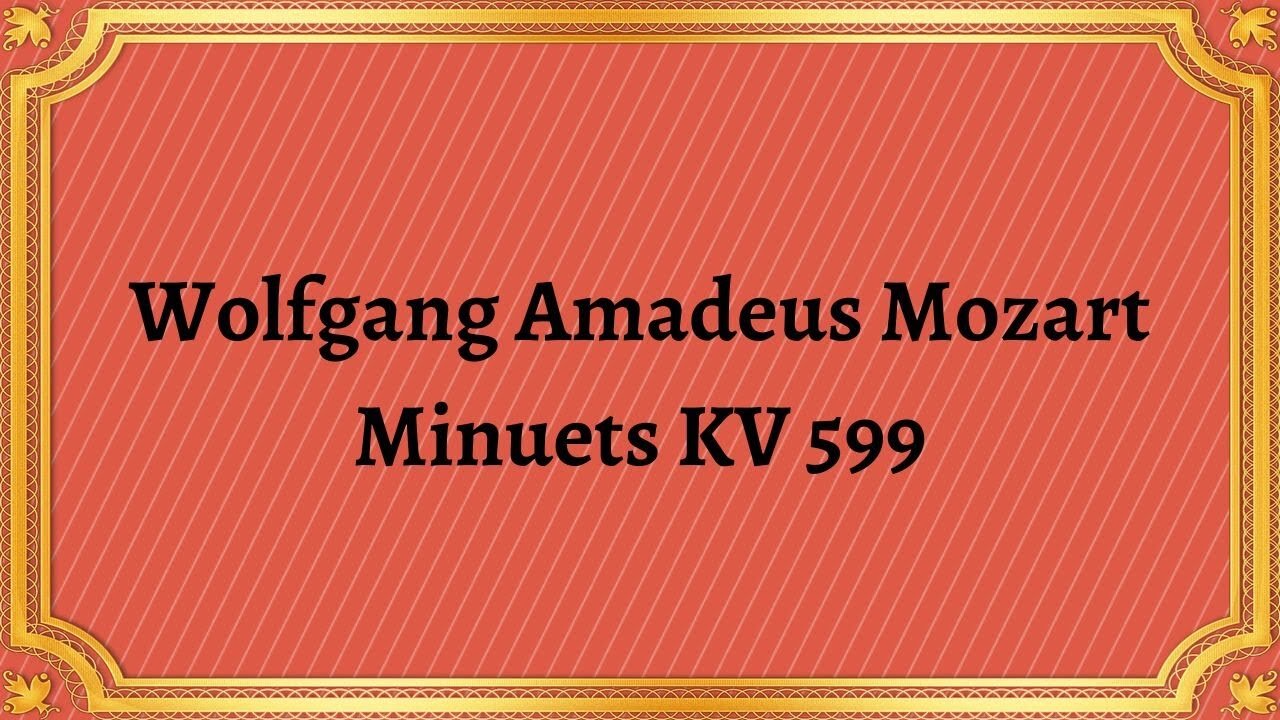Premium Only Content

Wolfgang Amadeus Mozart Minuets KV 599
#Mozart#Chamber_music#Classical_music#Minuets#musical_composition
Publication date 1954
Orchestre Hewitt; Maurice Hewitt
Wolfgang Amadeus Mozart is one of the most influential composers of the Classical era, and his music continues to be popular today. One of his most famous works is the set of Minuets KV 599, which is a collection of six dances that were composed in 1791
The Minuets KV 599 were composed in Vienna, Austria, during the last year of Mozart's life. The minuet was a popular dance in the 18th century, and it was often included in formal occasions such as balls and weddings. Mozart was an expert in writing minuets, and he composed many of them throughout his career. However, the Minuets KV 599 are unique because they were not intended to be danced to. Instead, they were written as a concert piece, and they are often performed today as part of a larger concert program.
The Minuets KV 599 are a set of six dances, each with its own distinct character and melody. The first minuet is in the key of C major and has a lively and cheerful melody. The second minuet is in the key of G major and is more subdued and introspective. The third minuet is in the key of D major and has a graceful and elegant melody. The fourth minuet is in the key of A major and is more playful and rhythmic. The fifth minuet is in the key of F major and has a pastoral and peaceful character. Finally, the sixth minuet is in the key of C major and is the most complex and elaborate of the set.
The Minuets KV 599 are an important example of Mozart's skill in composing minuets. They demonstrate his mastery of classical form, melody, and harmony, and they showcase his ability to create music that is both joyful and reflective. They are also significant because they represent a departure from the traditional use of the minuet as a dance. By composing the Minuets KV 599 as a concert piece, Mozart elevated the minuet to a higher level of artistry and paved the way for other composers to experiment with the form.
In conclusion, Mozart's Minuets KV 599 are an important example of his skill and creativity as a composer. They are a testament to his mastery of classical form and melody, and they represent a departure from traditional uses of the minuet as a dance. Today, they are often performed as part of a larger concert program and continue to be enjoyed by audiences around the world.
1. Minuets Kv. 599: C Major (2:18)
2. Minuets Kv. 599: G Major (2:36)
3. Minuets Kv. 599: E Flat Major (2:28)
4. Minuets Kv. 599: B Flat Major (2:19)
5. Minuets Kv. 599: F Major (2:11)
6. Minuets Kv. 599: D Major (2:18)
-
 34:26
34:26
Classical music_Music Inspiration
3 months agoAram Khachaturian Concerto for Violin and Orchestra
1322 -
 15:00
15:00
Mrgunsngear
19 hours ago $5.98 earnedDan Wesson DWX: 2011 & CZ-75's Baby
43.7K18 -
 16:07
16:07
SKAP ATTACK
17 hours ago $5.32 earnedNuggets STEAL Game 1 Behind Jokic Mastery
61.3K11 -
 5:31:41
5:31:41
Big Fitz Plays
6 hours agoWho Gave Me a Chainsword?! | Space Marine 2 Chaos Stream
26.3K1 -
 22:16
22:16
marcushouse
20 hours ago $4.97 earnedFinally, the Starship Info We’ve Been Waiting For… And What We Can Do With It Is Wild!
51.1K20 -
 33:32
33:32
Ohio State Football and Recruiting at Buckeye Huddle
18 hours agoOhio State Football: What Position is the Biggest Question Mark for the Buckeyes?
41.4K2 -
 2:07:19
2:07:19
JahBlessGames
5 hours agoEASTER STREAM TEST
19.3K2 -
 9:30
9:30
VSOGunChannel
22 hours ago $2.05 earnedAdmin Actually Defending the 2nd Amendment?
29.9K12 -
 LIVE
LIVE
Biscotti-B23
7 hours ago $0.57 earned🔴 LIVE REMATCH TOURNAMENT W/ DOTODOYA ⚽ OTSUTSUKI FC VS YOUTUBE ALLSTARS
29 watching -
 44:55
44:55
BEK TV
16 hours agoTARIFFS, TECH TYRANNY, AND PROPHECY: CLAY CLARK EXPOSES THE GLOBAL RESET NO ONE IS TALKING ABOUT
27.1K7